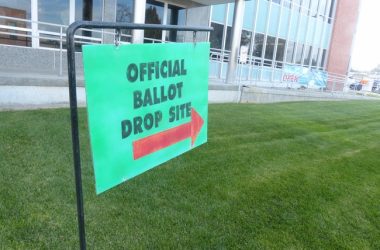 Restrictions due to COVID-19 have halted gatherings including the face-to-face group meetings that have long been a mainstay of addiction treatment and counseling. (CDC file art)
Restrictions due to COVID-19 have halted gatherings including the face-to-face group meetings that have long been a mainstay of addiction treatment and counseling. (CDC file art)
The governors of Oregon, Washington and California pledged Monday to coordinate plans to reopen their states’ economies, pushing back after President Trump said earlier in the day the decision was his to make.
Oregon Gov. Kate Brown joined Washington Gov. Jay Inslee and California Gov. Gavin Newsom in agreeing to work together to develop what they described as a regional framework that would be guided by data and science, not by politics.
“The West Coast will flip the script on COVID-19,” the governors said in a joint statement, “with our states acting in close coordination and collaboration to ensure the virus can never spread wildly in our communities.”
Six Northeast states – New York, New Jersey, Delaware, Rhode Island, Pennsylvania and Connecticut – announced a similar coordination plan earlier Monday.
The announcement from the West Coast governors was short on details, leaving the next steps for reopening the economy unclear. They said in a joint statement they want to “see a decline in the rate of spread of the virus before large-scale reopening, and we will be working in coordination to identify the best metrics to guide this.”
Still, they said each state would develop its own plan. And in Washington, Inslee and an advisor said the deal was non-binding and wouldn’t require all the states to act in unison, The Seattle Times reported.
Brown told KGW the first restriction to be lifted would be the ban on elective surgeries and medical procedures. When a restrictions is lifted, KGW reported, Oregon will study it for two weeks to ensure that cases don’t increase. A spokesman said more details would be announced Tuesday.
“Reopening Oregon is not a process that will happen overnight or statewide all at once,” said Brown’s spokesman, Charles Boyle. “We will only reopen Oregon if the data shows we can do so without jeopardizing public health.”
State epidemiologist Dean Sidelinger said this weekend that Oregon’s shutdown would last through at least mid-May. State health officials declined to answer questions on Monday, referring them to Brown’s office. Brown had earlier said she wanted to see no deaths for 10 days before reopening — as well as an increase in testing. Oregon’s testing capacity has not grown for two weeks.
In a weekend update, the Institute for Disease Modeling, which has developed projections of Oregon’s coronavirus caseload, stressed the “urgent need for enormously increased testing capacity” before the state considers easing social distancing efforts.
Oregon’s latest modeling shows that cases have plateaued here, though the state isn’t expected to see a drop-off in numbers for at least six weeks. As of Monday, 53 people had died from the coronavirus and 1,584 had tested positive.
Even if Oregon returned to the moderate restrictions in place in mid-March, which included school closures and bans on gatherings of more than 25 people, “active infections will rapidly increase,” the institute’s researchers concluded.
Chunhuei Chi, director of the Center for Global Health at Oregon State University, said the state needed between 400 and 1,000 people to administer testing and trace the contacts of known positive cases to be able to effectively control the spread when restrictions are gradually loosened. By comparison, Multnomah County, Oregon’s most populated county, had a pre-pandemic staff of seven people to trace contacts and has hired three more.
Chi said if Oregon follows the world’s best example of controlling the virus – Taiwan, which has fewer than 400 cases among its 23 million residents – then new cases found here daily should fall to the low single digits before restrictions are loosened.
Oregon announced 57 new cases Monday, 80 on Sunday. That could drop to the single digits by mid- to late-May, Chi said, if Oregon continues its stay-at-home order and ensures masks are worn in public places like grocery stores and by delivery people who have frequent contact with others.
“I’m hopeful if we’re doing a good job, I’m not looking at May, I’m more looking at June – but I could be wrong,” Chi said. “If we do a superb job, it could be feasible to reopen in May.”
But Chi cautioned that reopening the economy shouldn’t be treated as an either-or.
“The more suitable question is: To what extent can we gradually reopen our economy, our work?” he said.
Brown’s spokesman said decisions would be made in consultation with local leaders. Portland Mayor Ted Wheeler, who pushed Brown to issue Oregon’s March 23 stay-home order, said through a spokesman that he would continue looking to county and state health officials for recommendations.
“We want to get the economy up and running again as soon as possible,” Wheeler said in a statement. “We also don’t want to do that until we’re confident we’ve moved into a place where we know we won’t give the COVID-19 virus a chance to make a comeback.”
Molly Harbarger of The Oregonian/OregonLive contributed reporting.
This story is published as part of a collaborative of news organizations across Oregon sharing stories in the public interest. The Malheur Enterprise is part of the collaborative.




